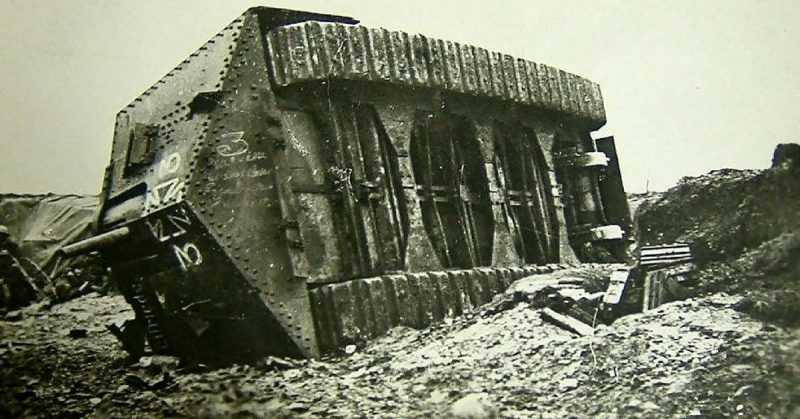The 24th of April, 2018, marked the 100th anniversary of the Second Battle of Villers-Bretonneux ― the first tank-versus-tank skirmish in history. The battle took place in Northern France towards the end of the First World War, in 1918, and was also the first time that the German A7V tank saw serious action. The predecessor of one of the greatest tank industries of the Second World War faced the revolutionary British Mark IV tank.
The prelude to this encounter came as the Imperial German Army was preparing for a large offensive, known as the Spring Offensive, after Russia had exited the war due to the 1917 October Revolution. This event enabled the Germans to transfer the bulk of its forces that had been tied to the Eastern Front westwards to France. But time was of the essence, as 1917 was also the year the United States of America entered the war in Europe, annulling the German’s slight numerical advantage.
Thus, the offensive had to be conducted before the U.S. Expeditionary force arrived on the continent and who, together with its Allies, the British and the French, would be able to deliver a potentially fatal blow to the German army.
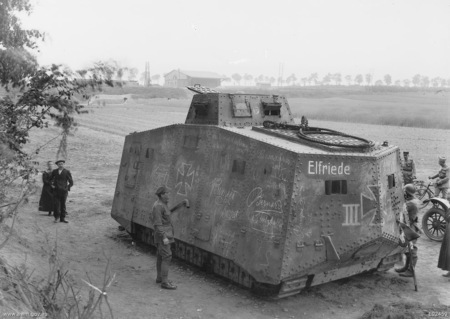
The Second Battle of Villers-Brenneux followed the first, which took place in March 1918 and was also an effort to contain the advancing Germans. The town of Villers-Bretonneux was a strategic point for the Germans as they could use the terrain to observe and direct bombardments of the city of Amiens, some 10 miles away.
After the first battle, which lasted from 30th of March to 5th of April 1918, the Germans had been repulsed from Villers-Bretonneux, but less than 20 days later they were ready to try to take the town once again. The British together with Australian and French forces suffered great casualties, but were able to hold the town and its surroundings.
During their next push, the Germans sent 14 out of a total of 20 of their newly-produced A7V tanks to Villers-Bretonneux in hopes of making a breakthrough using the new weaponry which was capable of providing cover for infantry and destroying machine-gun pillboxes along the frontline. Initially, the Germans made a breakthrough, capturing the town of Villers-Bretonneux which lead them to quickly assemble and try to capture Amiens.
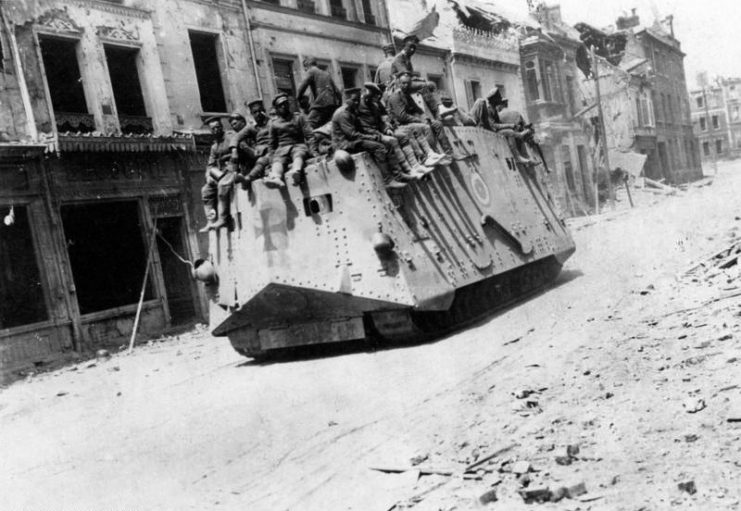
Once they heard of the armored presence in the sector and that Villers-Bretonneux had fallen, the British responded by sending three Mark IV ― two of them “female” which meant they were armed only with machine guns, and one “male” armed with two 6-pounder guns ― who soon faced three A7Vs.
The encounter happened near the village of Cachy, 8 miles southeast of Amiens. The “male” tank was commanded by Lieutenant Frank Mitchell, while on the opposite end he met with the A7V nicknamed “Nixe”, commanded by Lieutenant Wilhelm Biltz, with two more German tanks on its flanks.
Biltz first fired upon the “female” British tanks who decided to retreat as their machine guns were useless against the German armored vehicle. “Nixe” then entered into a deathmatch with the “male” tank. Mitchell was forced to maneuver excessively, due to constant artillery fire which covered the offensive.
After exchanging fire with no success, the British tank managed to stop for long enough for the gunner to hit his target. The gunner used his chance well, for he managed to hit “Nixe” not once but three times, knocking it out of the duel.
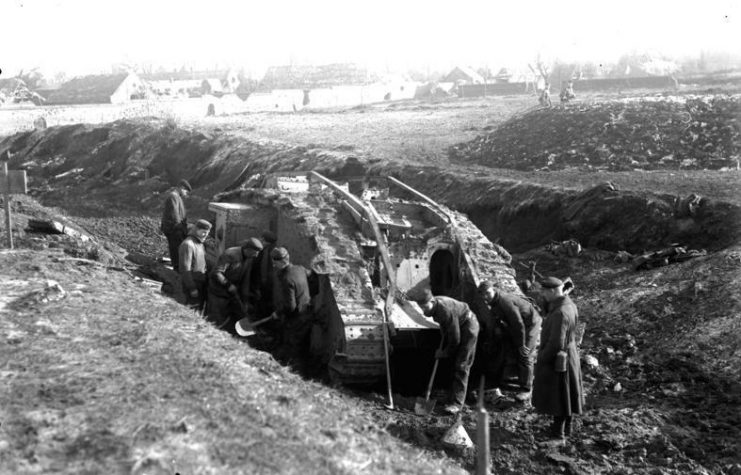
The crew of 18 men, including Lieutenant Biltz, abandoned the tank and started fleeing, but nine of them were gunned down by machine gun fire from the British tank.
Mitchell then proceeded to face the two remaining A7Vs, which were now supported by a bulk of infantry, all the time still under constant artillery fire. His maneuvering skills proved to be remarkable as he managed to avoid the heavy shelling while firing on the enemy tanks. German tanks, which were a much too valuable asset to be lost easily, decided to abort their attack and started retreating.
The Mitchell’s Mark IV fired on the retreating enemy, killing many of the troops involved in the combined assault with case-shot. Soon after Mitchell was joined by seven of the new British Whippet medium tanks, who also provided fire support against the German infantry, gunning them down and even running over them.
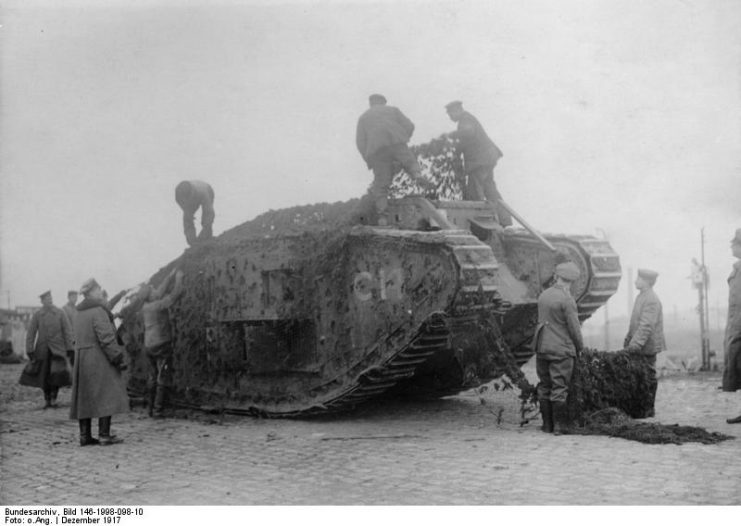
Three of the Whippet tanks were lost due to intense artillery fire that covered the retreat of German troops, and a mortar shell damaged one of the tracks on the Mark IV, forcing its crew to abandon it.
Mitchell and three other surviving crewmen managed to reach a British trench, sealing the first ever recorded tank-versus-tank victory in history.
The Allied counter-attack that followed foiled the German plans to take Amiens and once again captured the Villers-Bretonneux, even though skirmishes continued in the months to follow, as the area never fell completely under Allied control.
The Spring Offensive, although unsuccessful in the end, saw some of the most intense battles of the war, causing thousands more to lose their lives. The encounter between tanks during the battle opened a completely new chapter in the history of warfare ― one that would soon enough turn the focus of military investments into the production of armored vehicles intended to assume the leading role on the battlefield.
